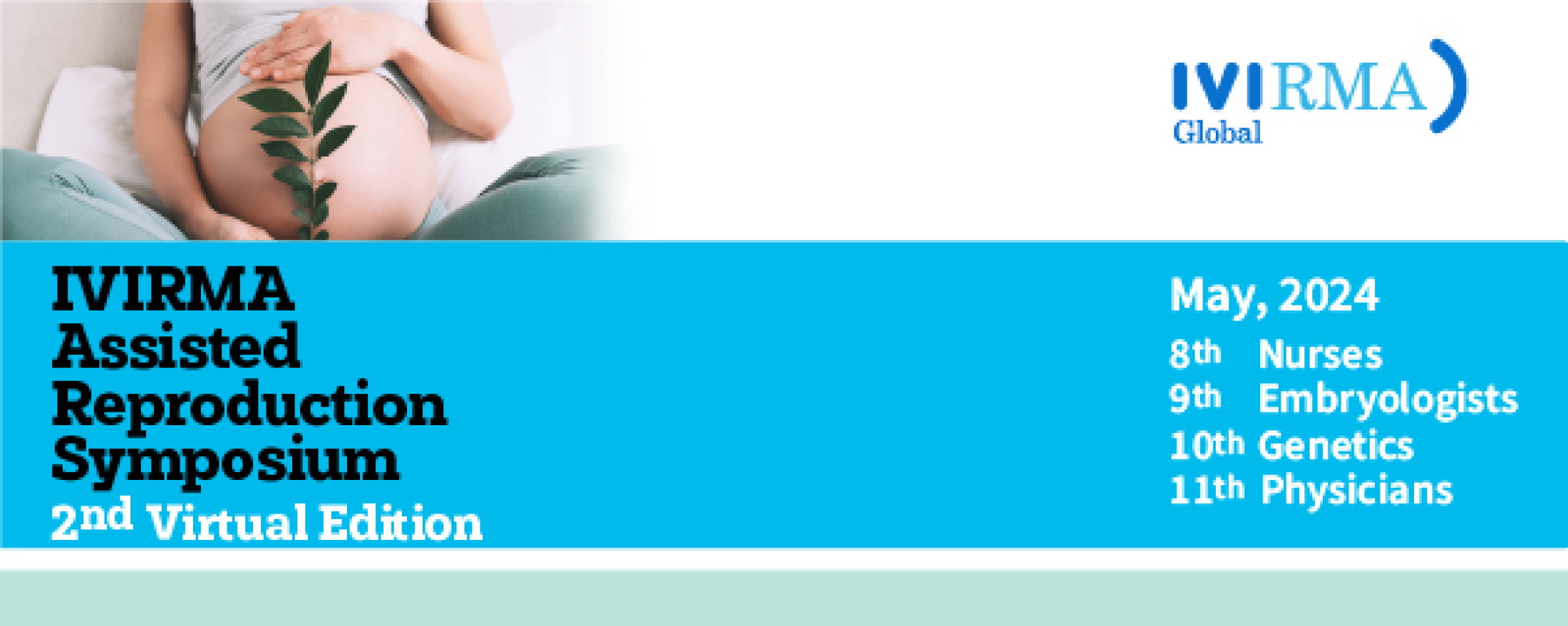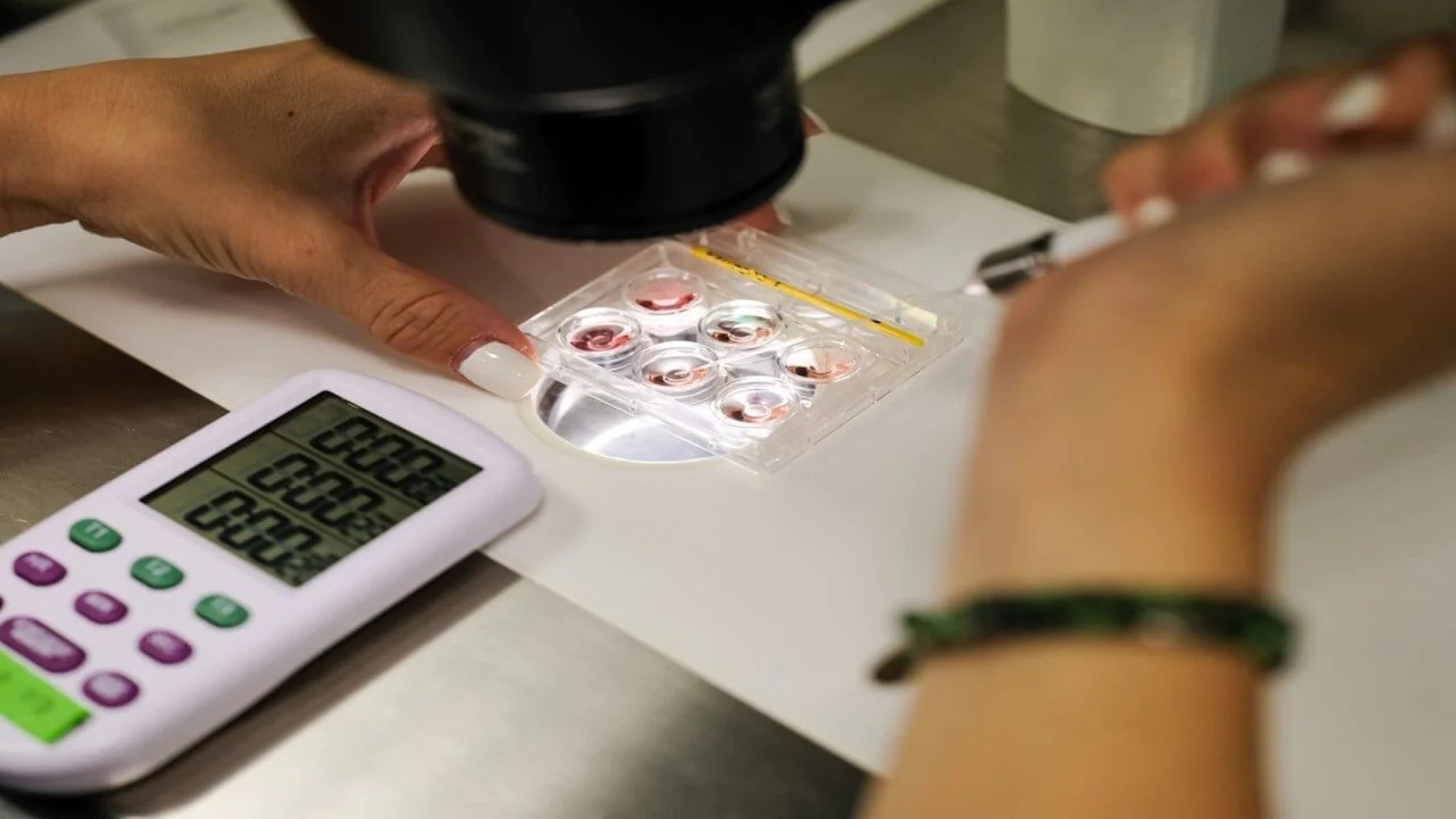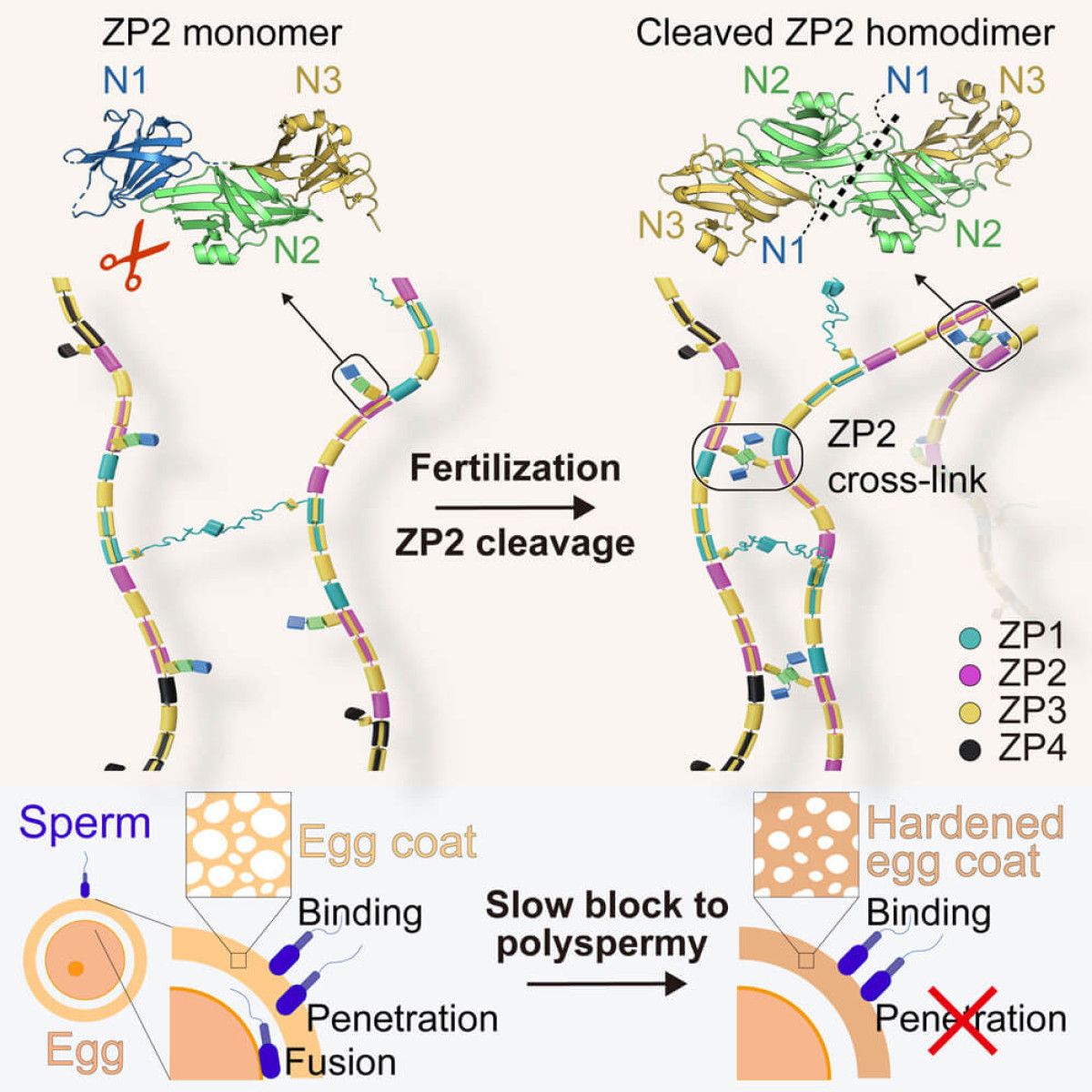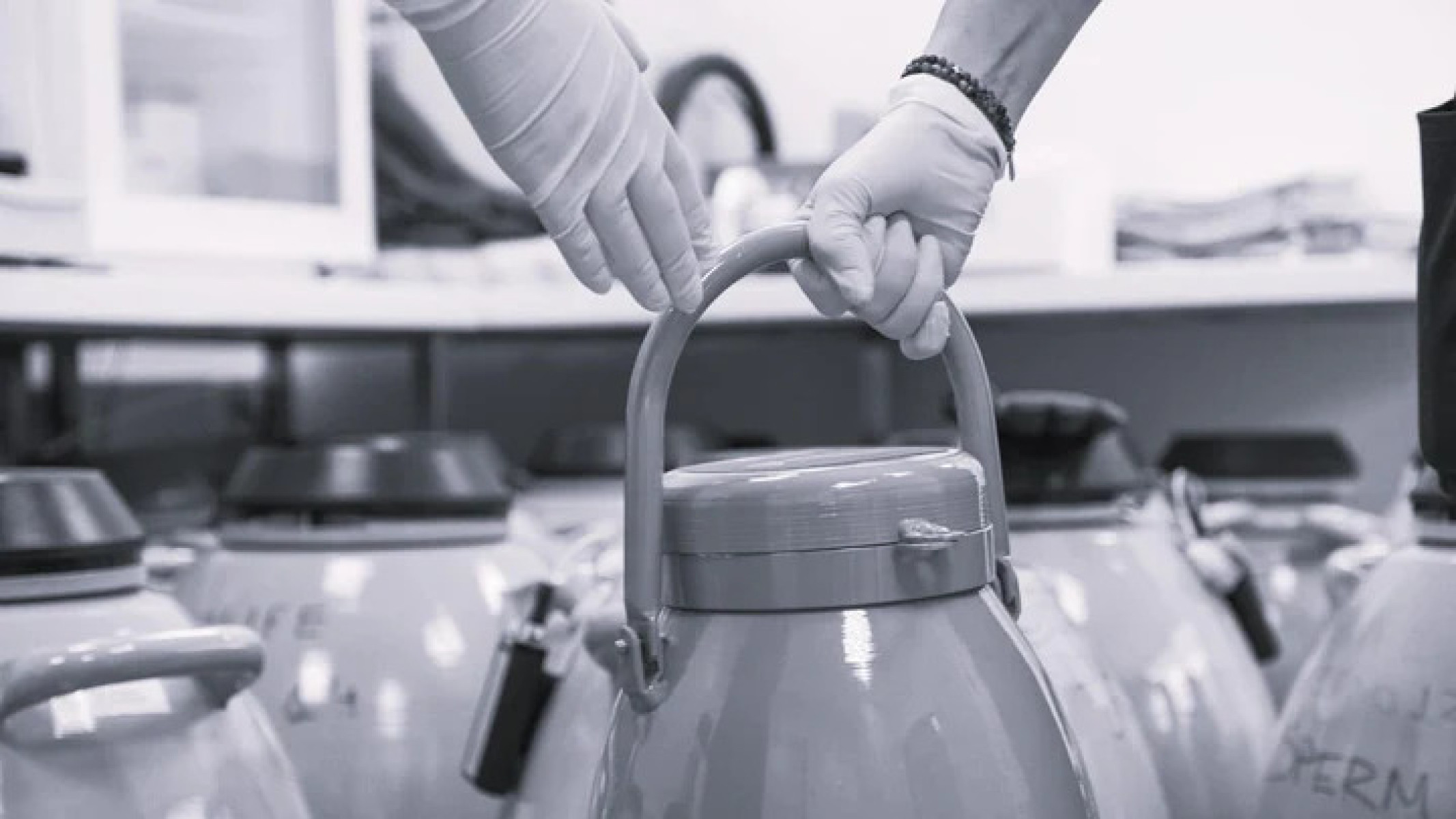
IVF NewsConference: IVIRMA Assisted Reproduction Symposium
IVIRMA Global 02 April 2024

We are thrilled to extend a warm invitation to you for the upcoming 2nd IVIRMA Assisted Reproduction Symposium scheduled from May 8th to 11th, 2024. This four-day symposium is specially designed for physicians, embryologists, nurses, and geneticists. It will be conducted online and is free of charge. The event will feature distinguished international speakers who will cover cutting-edge topics such as PGT-A findings, experimental therapies for ovarian aging, non-invasive embryo assessment, immunological treatments, and the significance of the endometrium in reproductive success. Chairman
Scientific Secretary
Scientific Committee Members
[ Full Article ] Webinar: UP CLOSE AND CLINICAL
International IVF Initiative 02 April 2024

3pm ET/ 8pm UK/ 9pm CET, Tuesday 23rd April 2024. Moderators: Panelist: Dr. Sergio Papier Presentations: Moonshots and last miles: what it may take to treat Opening the black box: why do euploid blastocysts fail to An artificial intelligence tool predicts blastocyst Storage trends, usage and disposition outcomes following egg Q and A [ Full Article ] Join Our IVF Newsletter for Updates & Latest JobsNews: Unveiling the Mysteries of Egg Fertilization: The Role of ZP2 Cleavage and Egg Coat Hardening
IVF.net Newsdesk 02 April 2024

Fertilization, the pivotal moment when a single sperm merges with an egg to form a new life, is a marvel of biological precision. Beyond the romance of conception lies a complex ballet of molecular interactions, finely tuned to ensure that only one sperm can succeed. Central to this process is the zona pellucida (ZP), the protective egg coat that undergoes remarkable changes immediately after fertilization to prevent any other sperm from entering the egg. Recent groundbreaking research has shed light on the molecular intricacies of this process, particularly focusing on the role of the ZP2 glycoprotein, a key player in the hardening of the egg coat that blocks polyspermy – the penetration of an egg by more than one sperm. The Crucial Role of ZP2 in FertilizationThe ZP, a glycoprotein envelope surrounding the egg, is the first line of interaction between the egg and the sperm. It plays a critical role in species-specific sperm recognition and acts as a gatekeeper, ensuring that only one sperm can fertilize the egg. Following the initial fertilization event, the ZP undergoes a transformation, hardening to prevent any subsequent sperm from penetrating the egg. The mechanism behind this transformation has long been a subject of fascination and study within the scientific community. Recent studies have uncovered a critical piece of this puzzle: the cleavage of ZP2, a major component of the ZP structure. Before fertilization, ZP2 is primed to interact with sperm. However, once fertilization occurs, ZP2 is cleaved, undergoing a significant transformation that leads to the hardening of the ZP. From Cleavage to Hardening: The Journey of ZP2The journey from ZP2 cleavage to egg coat hardening is a complex one, involving the oligomerization of the cleaved ZP2. Oligomerization is a process by which proteins bind together, forming a structure that is significantly different from that of the individual proteins. In the case of ZP2, cleavage triggers this oligomerization, leading to extensive cross-linking between ZP filaments, the structural components of the ZP. This cross-linking effectively reinforces the ZP, making it impenetrable to additional sperm. This revelation came from both biochemical and structural studies, including the analysis of vertebrate egg coat filaments and computational models of human ZP. These studies have provided unprecedented insights into the molecular architecture of the egg coat and the dramatic alterations it undergoes following fertilization. Implications and Future DirectionsThe findings from these studies are not just academically intriguing; they have practical implications for understanding human fertility and developing treatments for fertility issues. By illuminating the molecular basis of ZP hardening, this research opens the door to potential interventions for conditions related to polyspermy, which can lead to fertilization failures and early embryonic loss. Moreover, the detailed understanding of ZP2's role in fertilization could lead to novel contraceptive methods that mimic the natural blocking mechanisms of the egg coat. On the flip side, for couples facing infertility challenges, tweaking the process of ZP2 cleavage and oligomerization could enhance the chances of successful fertilization during assisted reproductive techniques. Concluding ThoughtsThe dance of fertilization, with its tightly regulated steps and precise molecular cues, is a testament to the complexity of life's beginnings. The recent advances in our understanding of ZP2 cleavage and egg coat hardening add a fascinating chapter to the story of human reproduction. As we continue to unravel the mysteries of fertilization, we not only deepen our appreciation for the wonders of biology but also arm ourselves with the knowledge to tackle some of the most pressing challenges in reproductive health. The journey from a single sperm's successful penetration of the egg to the hardening of the egg coat is a marvel of biological engineering, ensuring the uniqueness of each fertilization event. In the grand scheme of life, it's a reminder of the delicate balance and intricate processes that underpin our very existence. Source Cell - ZP2 cleavage blocks polyspermy by modulating the architecture of the egg coat [ Full Article ] News: ART & Embryology training program
Chennai Fertility Centre and Research Institute 01 April 2024

Training Batch Schedule 2024 May = 06th to 20th 2024 The International School of Embryology a unit of Chennai Fertility Centre and Research Institute was established to offer training in Advanced Reproductive Techniques and Embryology for clinicians and embryologists. It will help them to know in-depth knowledge and have good hands-on training. The members of our teaching faculty aim to bring Clinician and Embryologists to the highest level of knowledge about Assisted Reproductive Technology and practical capability. Our courses cover basics in Andrology, embryology, ICSI, and cryosciences (Hands-on). Limited Seats. For admission Contact 9003111598 / 8428278218 [ Full Article ] Announcement: Teaser Drops for Netflix Show "JOY" - The IVF Pioneers Story
IVF.net Newsdesk 19 March 2024
Netflix unveils a sneak peek at the original film "Joy," chronicling the revolutionary story of Louise Joy Brown, the first baby born through in vitro fertilization (IVF). Written by Rachel Mason and Jack Thorne, the film focuses on Jean Purdy, a nurse and embryologist, portrayed by Thomasin McKenzie of "Last Night in Soho" fame. Purdy, along with surgeon Patrick Steptoe, played by Bill Nighy, and scientist Robert Edwards, portrayed by James Norton, formed a groundbreaking trio that paved the way for IVF. The narrative celebrates their relentless determination and the marvels of science as they faced substantial challenges and skepticism to achieve their vision, ultimately making dreams possible for millions. [ Full Article ] Webinar: ETHICAL CONSIDERATIONS AND MANAGEMENT OF CRYOSTORAGE SAMPLES
International IVF Initiative 19 March 2024

3pm EDT/ 7pm UK/ 8pm CET, Tuesday 26th March 2024. [ Full Article ] News: Unlocking New Frontiers in Reproductive Biology: Turning Diploid Somatic Cells into Haploid Cells
IVF.net Newsdesk 19 March 2024
In a groundbreaking study published in Science Advances on March 8, 2024, a team led by Aleksei Mikhalchenko, Nuria Marti Gutierrez, and Shoukhrat Mitalipov unveiled a novel approach that could revolutionize the field of reproductive biology. Their research introduces a method for inducing haploidy in somatic cells, paving the way for innovative in vitro gametogenesis (IVG) techniques. The Essence of the DiscoveryThe research team developed a technique that initiates premature cell division by transferring nuclei from diploid somatic cells, specifically those in the G0/G1 phase, into the cytoplasm of metaphase mouse oocytes. This procedure bypasses the need for DNA replication, leading to the formation of haploid daughter cells. What's remarkable is the study's demonstration of accurate segregation of homologous chromosomes, resulting in complete haploid genomes. This process appears more efficient in cells from inbred strains compared to hybrids, suggesting a crucial role for genetic homology. Why It MattersHaploid cells, containing a single set of chromosomes, are a cornerstone of sexual reproduction and genetic diversity. The traditional path to producing haploid gametes from diploid cells involves inducing meiosis—a complex and tightly regulated process. The ability to convert diploid somatic cells directly into haploid cells outside of the traditional meiotic pathway opens new doors for reproductive technology and research, offering hope for advancements in fertility treatments and the study of genetics. Behind the ScenesTo achieve their findings, the researchers conducted meticulous experiments involving the collection of mature mouse oocytes and cumulus cells. Through somatic cell nuclear transfer (SCNT), they introduced somatic cell nuclei into oocytes devoid of their original DNA. This setup led to the unexpected yet precise segregation of chromosomes, akin to what occurs during the first division of meiosis, but without the genetic recombination typically seen in meiosis. The Bigger PictureThis study not only highlights a novel method for haploidization but also emphasizes the importance of genetic homology in successful chromosome segregation. The findings could have significant implications for the field of IVG, providing a new strategy for generating gametes from somatic cells. This could be particularly beneficial for individuals facing fertility challenges, offering them new hope. Moreover, the research sheds light on the mechanisms of chromosome segregation and pairing, contributing valuable insights to our understanding of cellular biology. The ability to induce haploidy in somatic cells could also facilitate genetic research, enabling scientists to study gene function and inheritance patterns more efficiently. Looking AheadWhile the study marks a significant leap forward, the researchers acknowledge that further investigation is needed to fully understand the mechanisms behind this process and its potential applications. The findings open up exciting possibilities for reproductive biology and medicine, promising to fuel future research and innovations in the field. This breakthrough is a testament to the power of scientific inquiry and innovation, offering a glimpse into the future of reproductive biology and genetic research. As we continue to explore the potential of this technique, we may find ourselves on the cusp of a new era in IVG and beyond. Sources Science Advances- Induction of somatic cell haploidy by premature cell division https://www.science.org/doi/10.1126/sciadv.adk9001 [ Full Article ] News: Alabama Governor Enacts Law to Safeguard IVF Services
IVF.net Newsdesk 11 March 2024
In a decisive move, Alabama Governor Kay Ivey has officially enacted legislation that offers legal protection to in vitro fertilization (IVF) providers. This development comes in the wake of a controversial court decision that classified frozen embryos similarly to children, sparking widespread concern among fertility clinics regarding potential legal repercussions. The urgency to reinstate IVF services was palpable, prompting the Governor to swiftly sign the bill into law. This action was in direct response to the temporary cessation of services at several leading fertility clinics in the state, following a ruling by the Alabama Supreme Court. The court had allowed three couples to file wrongful death lawsuits after their frozen embryos were accidentally destroyed, treating the embryos as "extrauterine children" under wrongful death statutes. This legislation, effective immediately, ensures that IVF providers are safeguarded against both criminal prosecution and civil lawsuits related to embryo damage or death during the IVF process. However, it does allow for civil suits against IVF product manufacturers, with compensation limited to the cost of the affected IVF cycle. The bill's passage was a relief for many, including medical professionals and potential parents, who had voiced their concerns and urged lawmakers for a resolution. Clinics like Alabama Fertility have announced plans to resume embryo transfers immediately, signaling a return to normal operations and the hope for many families to grow. Despite the protective measures for providers, the bill has faced criticism for not directly addressing the legal status of embryos created in IVF labs, a topic that remains contentious. The law sidesteps the broader issue of embryo personhood and focuses instead on enabling IVF services to continue without legal hindrance. Critics, including Republican Senator Larry Stutts, argue that the legislation prioritizes provider protection over patient rights, raising ethical and legal questions about the valuation of human life. Meanwhile, proposals by House Democrats to clarify the legal definition of embryos were not considered, highlighting the political and moral complexities surrounding IVF and reproductive rights. The legislation represents a temporary fix to a pressing issue, with the potential for further legislative action as the state grapples with the implications of its strict anti-abortion stance and the definition of life. The debate continues, underscoring the delicate balance between advancing reproductive technologies and navigating the ethical landscape they inhabit. Sources: AP News - Alabama governor signs legislation protecting IVF providers from legal liability into law
[ Full Article ] Course: Embryology and IVF
Dr. D'Pankar Banerji 05 March 2024
Conference: 25th Royan International Congress
Royan Institute 04 March 2024

Scientific Secretary of the 25th International Reproduction Congress is Dr. Maryam Hafezi, the Scientific Secretary of the 20th Stem Cell Congress is Dr. Leila Taghiyar, the Scientific Secretary of the Nursing and Midwifery Seminar is Mrs. Zahra Hessari, and the Executive Secretary of the Congress is Dr. Ruhollah Fathi. [ Full Article ] |